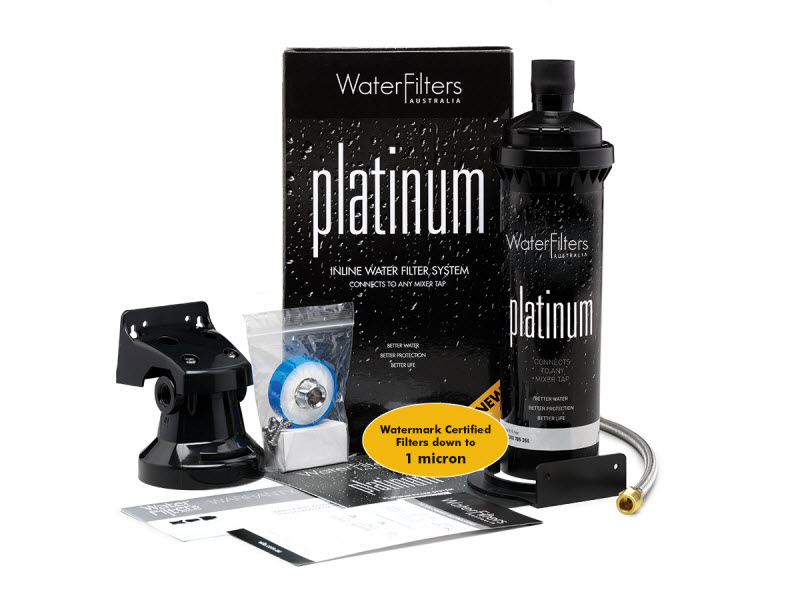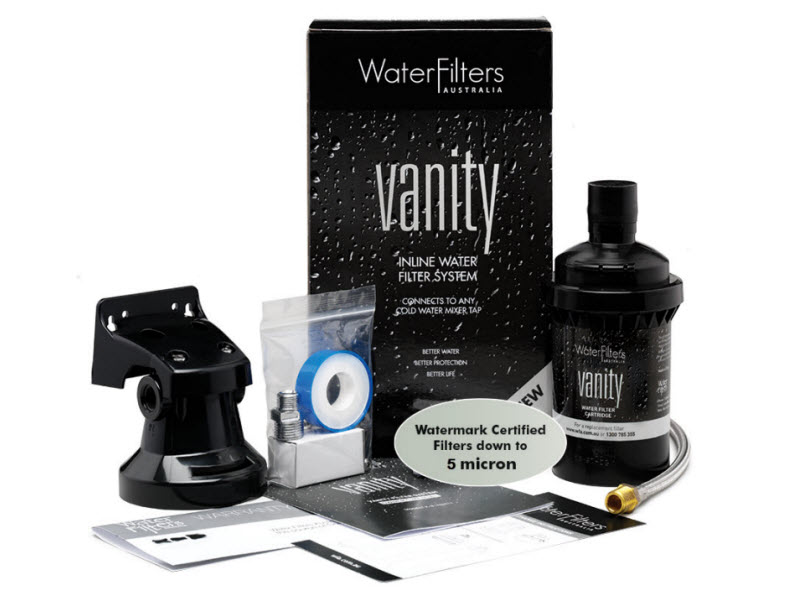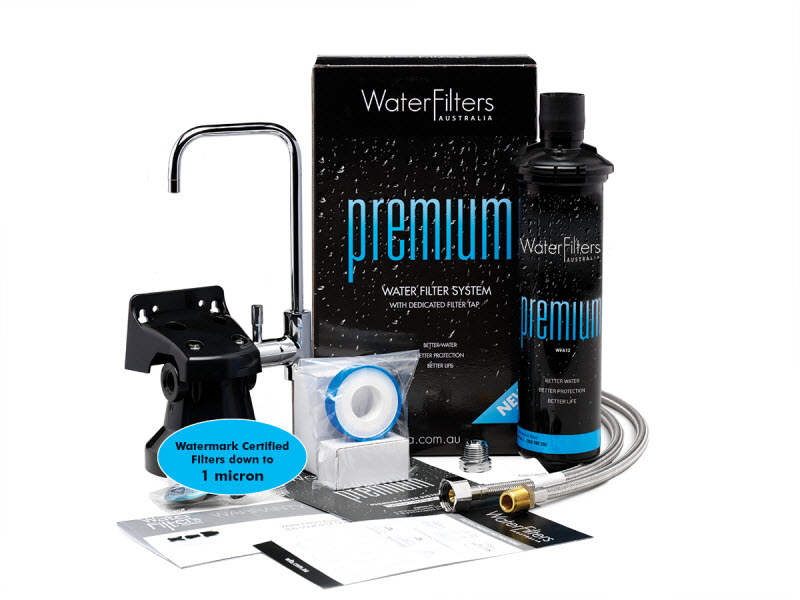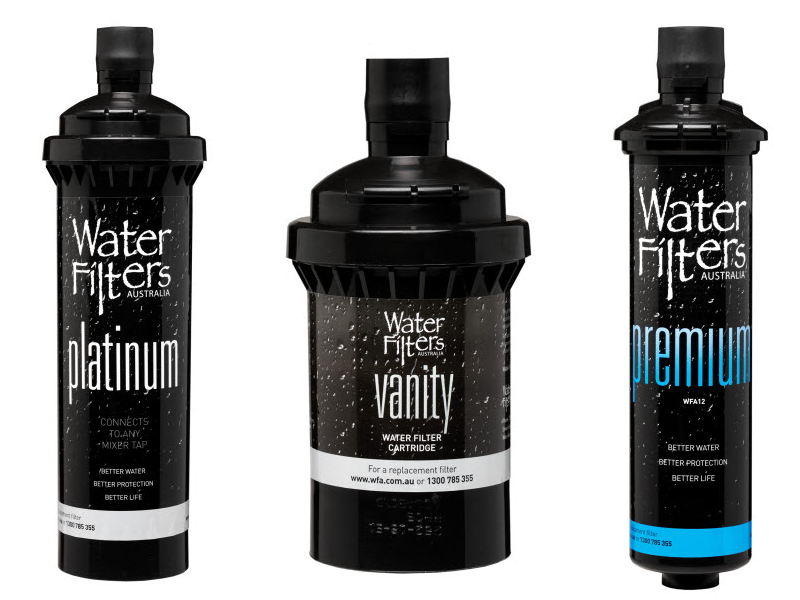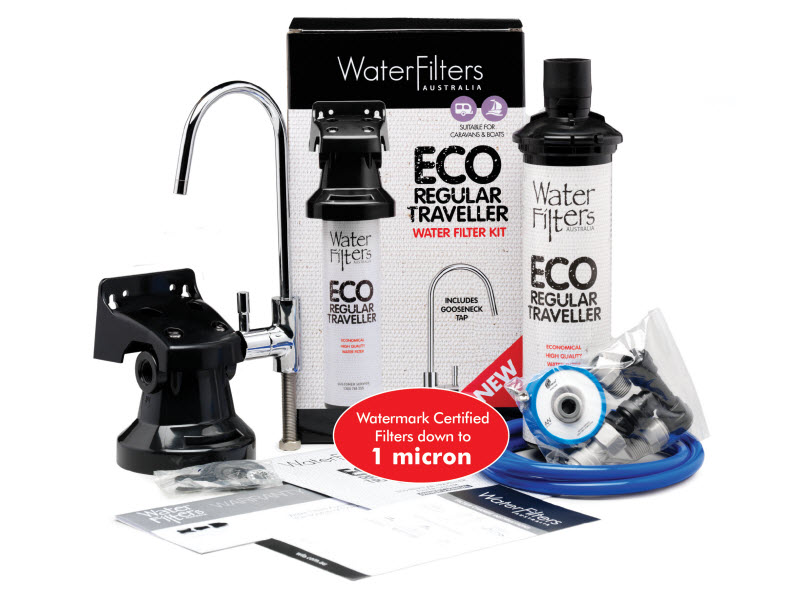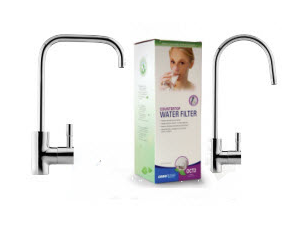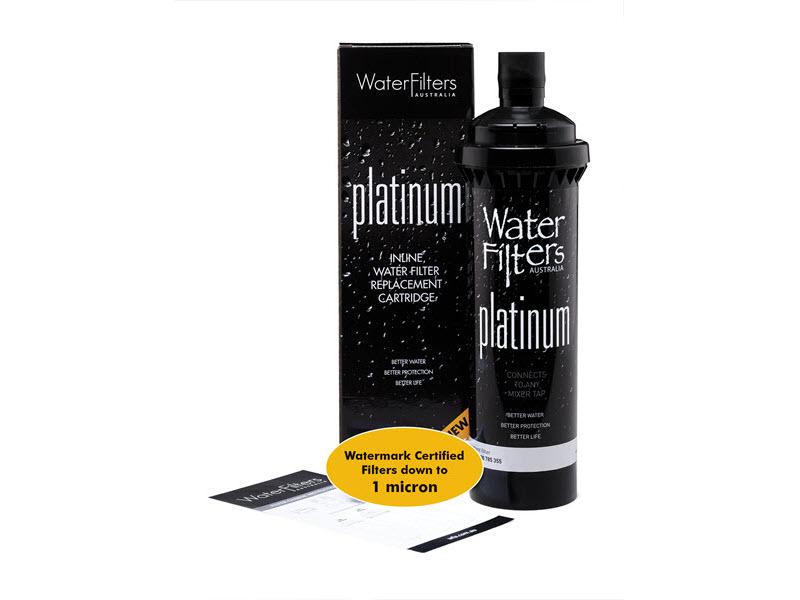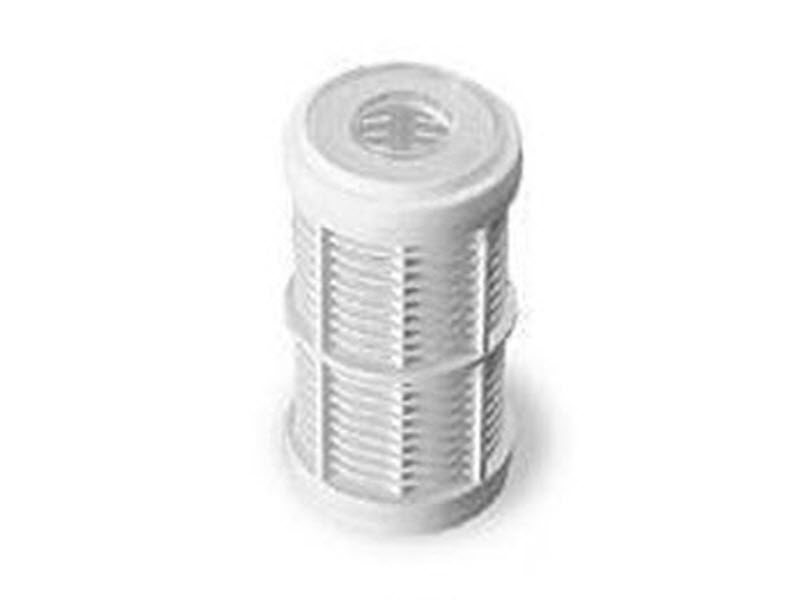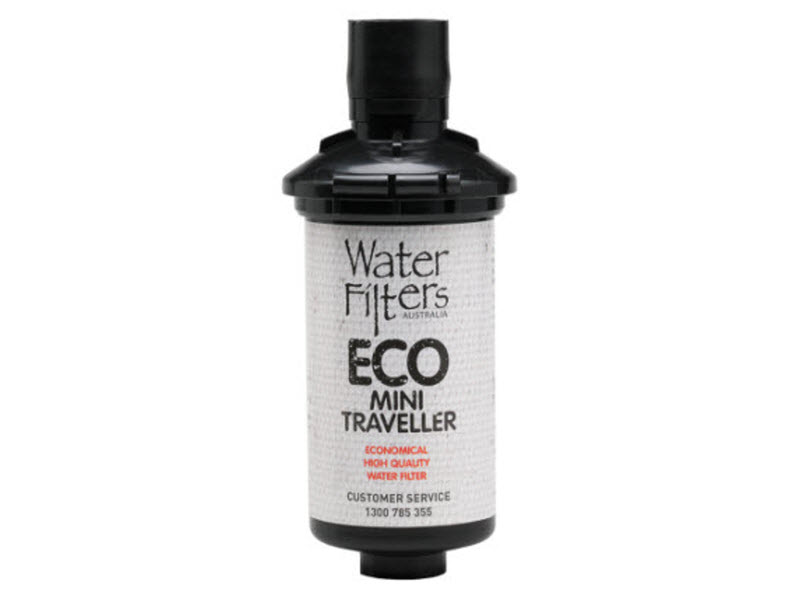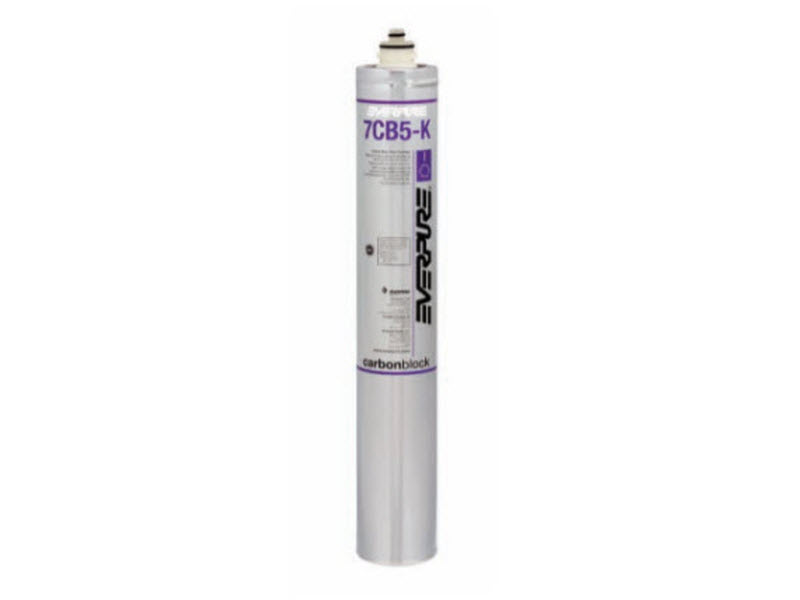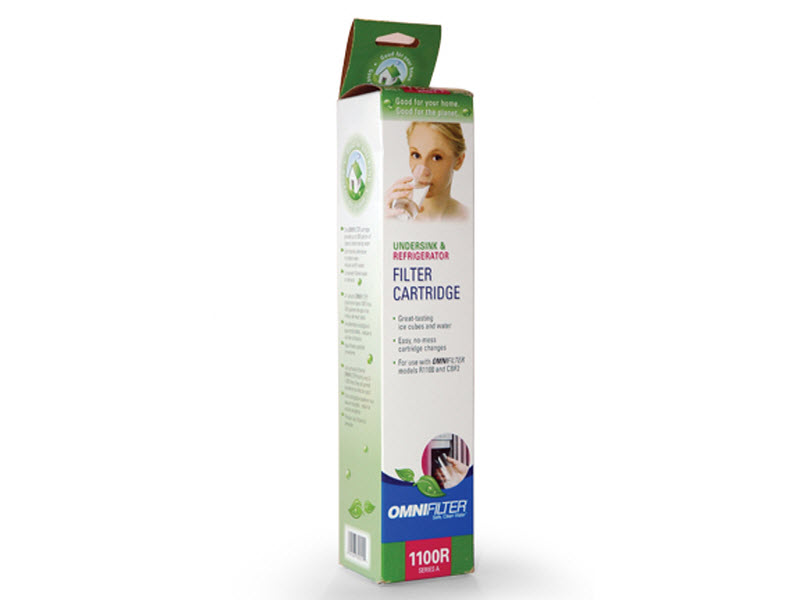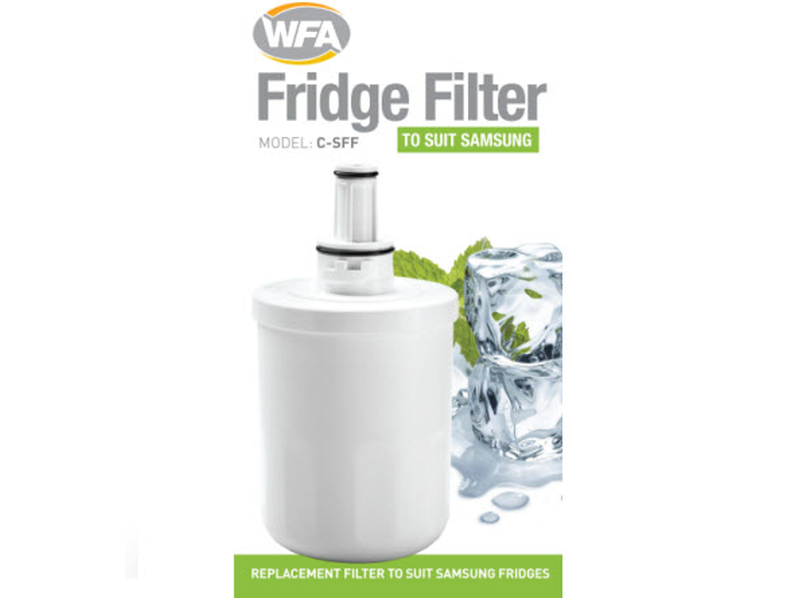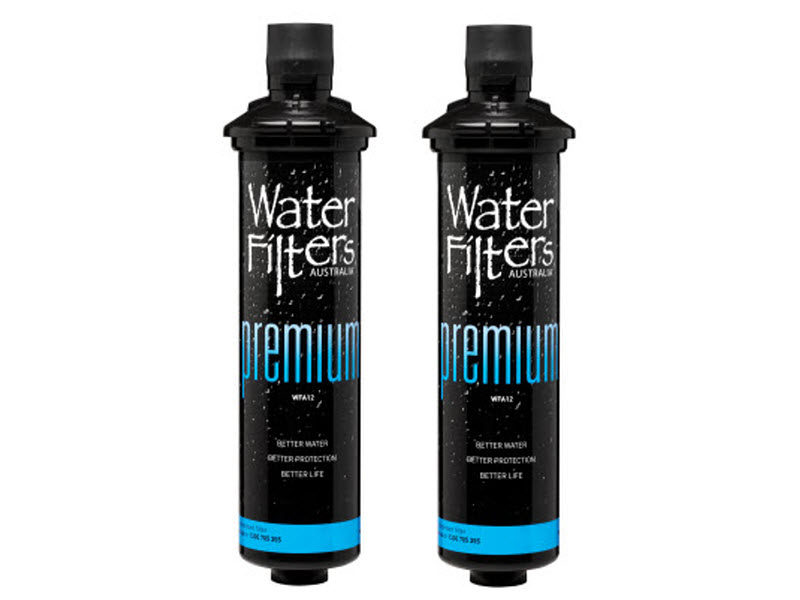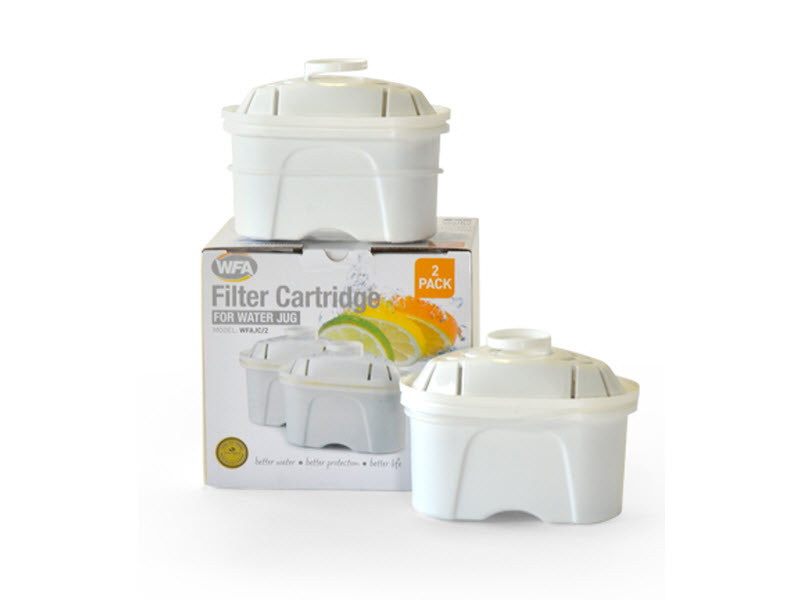How a water filter works
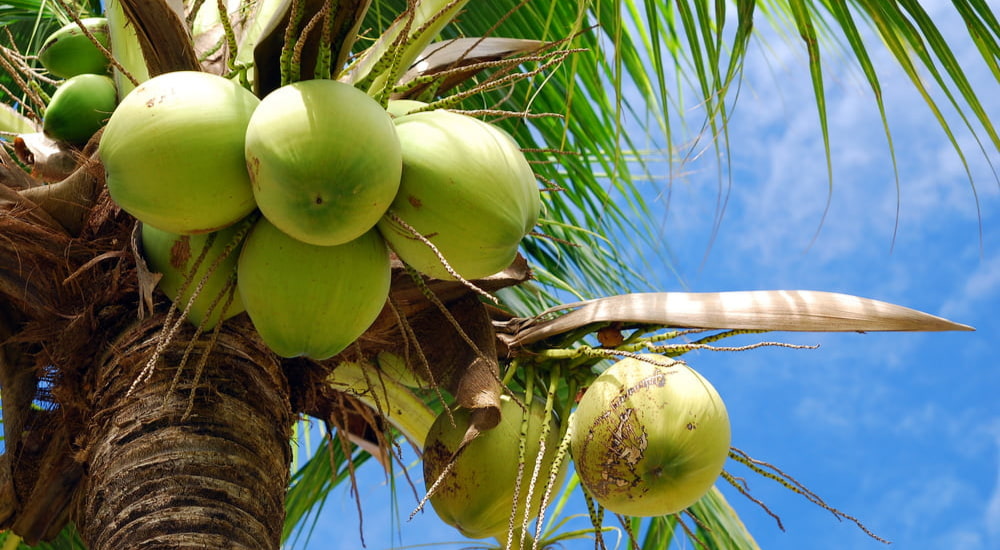
Coconuts and water filters…A surprising combination don’t you think?
The words conjure up images of drinking refreshing filtered water on a white sandy beach with palm trees swaying the breeze!
But that’s not the link…the coconut connection is more surprising than you think…
It’s actually because the inside of a water filter is made out of coconut husk (well it’s carbon – fired and then steam cleaned) but it started out life as a coconut!
Rather topical when you think how many uses the humble coconut has in our modern world today. Just step into a local supermarket and the shelves are ever growing with coconut products… coconut milk, coconut water, coconut oil… and the list goes on. The coconut inside WFA’s water filters is just one part of the water filtration process.
Water filters have evolved a long way since the early days but the basic principles are much the same. There are actually two stages of water filtration – mechanical and chemical filtration.
Mechanical Filtration
To best explain this process, there are various sizes of particles in our tap water. These particles can be things like sediment, rust and cysts.
A single particle is known in size by its “Micron” rating – the lower the micron rating the smaller the particle and it’s rated by size.
Just to give you an idea. Take a human strand of hair. It has a diameter of 75 microns in size.
The smallest particle visible to the human eye is 40 microns in size.
And cysts such as giardia and cryptosporidium are 1-4 microns in size.
So if a water filter is filtering down to 1 micron in size, it’s filtering tap water very finely and producing very high quality filtered water, similar if not better than bottled water.
So the first stage is to trap these particles with a something called a particle barrier.

Chemical Filtration
The second stage of the process is called chemical filtration and it’s this process that improves the smell and taste of the water.
Why do we need this?
Well, tap water has to be treated with chlorine as a disinfection agent before it reaches our kitchen sinks for health reasons. The water also often passes through aging underground pipes before it reaches our kitchen tap which again can affect the taste of the water. So this is where the carbon filter comes in.
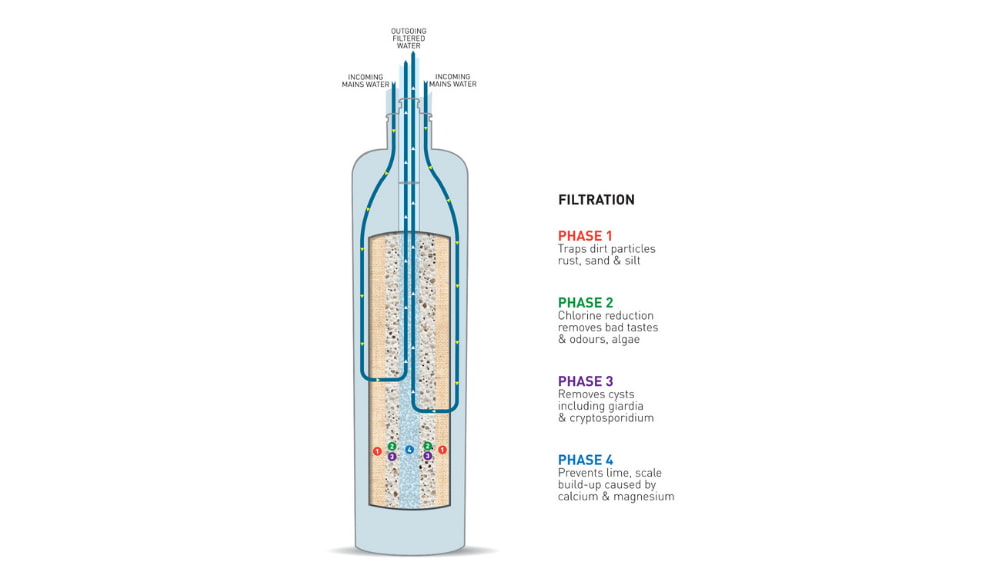
How does it actually work?
In WFA water filters we use a food grade carbon block and it’s the tiny pores within the carbon that absorb the nasty tastes and odours. And remove the chlorine from the tap water making your filtered water taste so much better!
Another advantage of the carbon block system that WFA use is that it covers the two stages of the water filtration process within one filter system. It acts both as a mechanical filter and a chemical filter.
Let’s take a closer look at how it all works inside the filter cartridge and the four phases of water filtration.
Phase 1
First of all the water comes in through the inlet at the top. It’s the water pressure that pushes the water through the filter media. Without water pressure a water filter just won’t work.
The carbon block inside is a hollow cylinder. And there’s coating on the outside of the cylinder called a sediment wrap and this is the material that traps the larger particles first. It’s basically a pre-filter and there to get rid of all the big bits like dirt, sand and silt which in turn helps make the internals of the carbon cartridge last longer.
Phases 2 & 3
Once the water has passed through the first phase, it gets forced through the carbon block.
The carbon block has the pores and performs phases 2 and 3 in the above diagram.
The pores not only trap small particles but also filter everything down to one micron. So the carbon block does two things. It’s removes the chlorine and bad tastes, odours and smells, plus traps any cysts like giardia and cryptosporidium that may be in the water.
Phase 4
Once the water has passed through the carbon block, it’s then in the hollow inside of the cylinder. Inside the hollow part of the carbon block is a substance called polyphosphate. This coats any calcium and magnesium particles and it inhibits their ability to stick onto stuff, especially important in hot and cold water appliances. So it inhibits the calcium and magnesium particles from forming limescale.
The polyphosphate substance inside the core of the carbon block dissolves over time so that’s why it is recommended that the cartridge is changed every 12 months. Not only because you want your carbon working efficiently but the filter won’t be able to inhibit the limescale after 12 months because all of the polyphosphate will have dissolved away.
That’s why it is super important to change your water filter cartridge every 12 months.
Ready to purchase your next one? Buy your water filter cartridge today.
Read more water filter systems articles.



